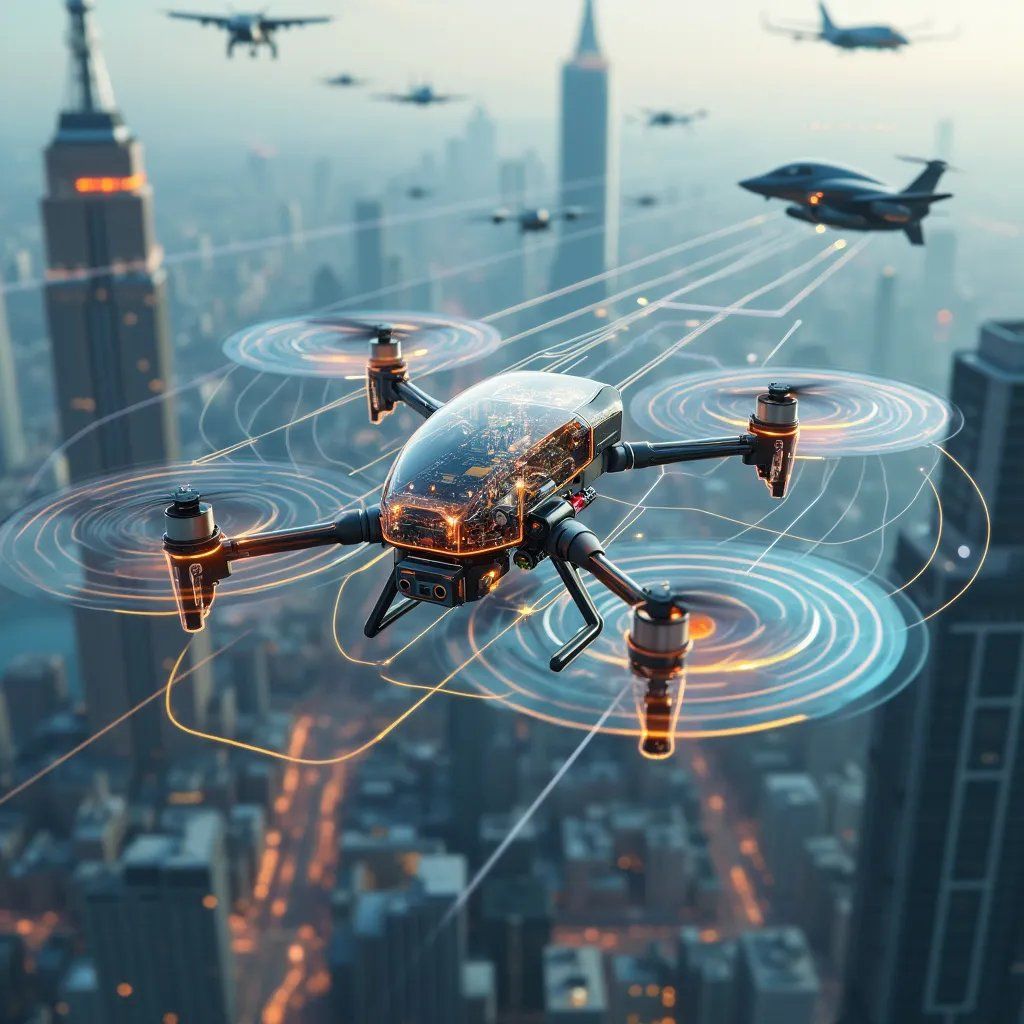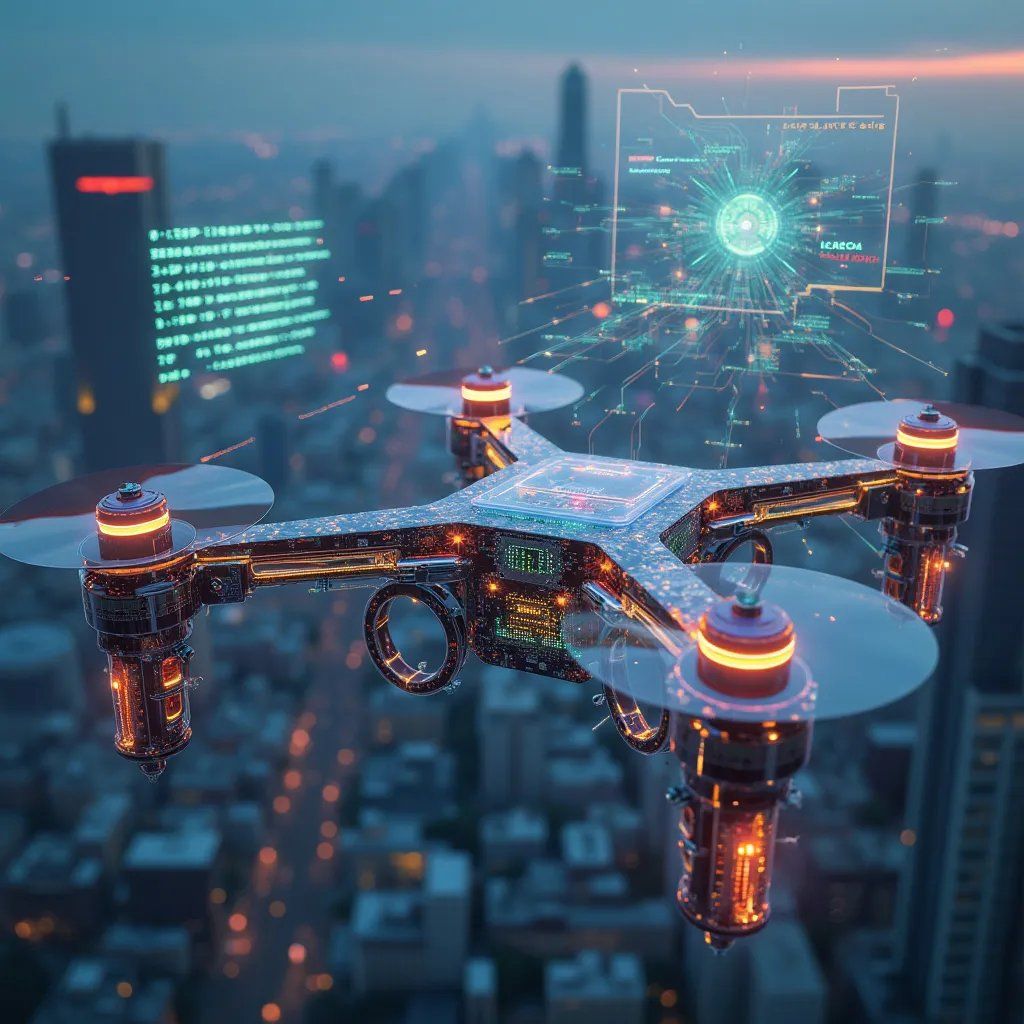Introduction
In the rapidly evolving world of unmanned aerial vehicles (UAVs) or drones, the security of telemetry data has become a critical concern for both military and civilian operators. At Decent Cybersecurity, our DroneCrypt IFF system stands at the forefront of this technological challenge, offering state-of-the-art encrypted telemetry solutions that bridge the gap between military-grade security and civilian applications. This article explores the crucial role of encrypted telemetry in drone operations, highlighting its importance, implementation challenges, and the innovative solutions shaping the future of secure drone communications.
The Imperative for Encrypted Telemetry
Telemetry in drone operations encompasses a wide range of data, including:
- Flight control commands
- Sensor readings and payload data
- GPS coordinates and navigation information
- System health and status updates
The encryption of this data is crucial for several reasons:
- Confidentiality: Protecting sensitive information from interception by unauthorized parties
- Integrity: Ensuring that telemetry data hasn’t been tampered with during transmission
- Authentication: Verifying the source of telemetry data and control commands
- Non-repudiation: Providing proof of data origin and receipt
DroneCrypt IFF: Our Approach to Encrypted Telemetry
At Decent Cybersecurity, our DroneCrypt IFF system incorporates advanced encrypted telemetry features designed to meet the stringent requirements of both military and civilian applications:
1. Quantum-Resistant Cryptography
- Utilizes post-quantum algorithms like CRYSTALS-Kyber for key encapsulation and CRYSTALS-Dilithium for digital signatures
- Provides a 256-bit post-quantum security level, ensuring long-term protection against future quantum computing threats
2. Low-Latency Secure Communication Protocol
- Custom protocol based on MQTT (Message Queuing Telemetry Transport)
- End-to-end encryption with typical latency under 50ms round-trip time
- Bandwidth-efficient design, requiring less than 10 KB/s per drone
3. Multi-Layer Security Architecture
- Implements a defense-in-depth approach, combining encryption with additional security measures
- Integrates with blockchain-based authentication for enhanced trust and integrity
4. Adaptive Encryption Schemes
- Dynamically adjusts encryption strength based on the operational context and threat level
- Balances security needs with performance and power constraints of drone systems
Military Applications of Encrypted Telemetry
In military contexts, encrypted telemetry is crucial for maintaining operational security and tactical advantage:
1. Covert Operations
- Ensures that drone telemetry doesn’t reveal mission details or asset locations
- Protects against enemy signal intelligence (SIGINT) efforts
2. Swarm Coordination
- Enables secure communication between multiple drones in swarm operations
- Prevents adversaries from disrupting swarm cohesion or injecting false commands
3. Electronic Warfare Resilience
- Resists jamming and spoofing attempts in contested electromagnetic environments
- Maintains command and control integrity in the presence of electronic countermeasures
4. Intelligence, Surveillance, and Reconnaissance (ISR)
- Protects sensitive sensor data collected during ISR missions
- Ensures the confidentiality of real-time intelligence feeds
Civilian Applications of Encrypted Telemetry
While military applications often drive innovation in encrypted telemetry, civilian drone operations also benefit significantly from these technologies:
1. Commercial Drone Delivery
- Protects customer data and delivery route information
- Prevents unauthorized interception or manipulation of drone commands
2. Critical Infrastructure Inspection
- Secures sensitive data collected during inspections of power lines, pipelines, or nuclear facilities
- Prevents industrial espionage and protects proprietary information
3. Law Enforcement and Emergency Services
- Ensures the confidentiality of drone-gathered evidence in police operations
- Protects personal privacy during search and rescue missions or disaster response
4. Precision Agriculture
- Safeguards valuable crop data and farming strategies
- Prevents unauthorized access to precision agriculture systems that could impact food security
Challenges in Implementing Encrypted Telemetry
While the benefits of encrypted telemetry are clear, several challenges must be addressed in its implementation:
1. Resource Constraints
Challenge: Drones often have limited computational power, memory, and energy resources.
Solution: DroneCrypt IFF employs lightweight cryptographic algorithms and efficient implementations optimized for drone hardware. Our system achieves high security with minimal impact on drone performance and battery life.
2. Real-Time Performance Requirements
Challenge: Many drone applications require near-instantaneous communication with minimal latency.
Solution: Our low-latency communication protocol ensures that encryption doesn’t significantly impact response times. With processing times under 10ms per transaction, DroneCrypt IFF maintains the responsiveness crucial for drone operations.
3. Regulatory Compliance
Challenge: Encrypted telemetry must comply with various national and international regulations.
Solution: DroneCrypt IFF is designed with regulatory flexibility in mind, capable of adapting to different compliance requirements while maintaining strong security.
4. Interoperability
Challenge: Encrypted telemetry systems must often interact with various ground control stations and other drones.
Solution: Our system implements open standards and protocols where possible, ensuring compatibility with a wide range of drone systems and control infrastructures.
Emerging Technologies in Encrypted Telemetry
As the field of drone technology evolves, several emerging technologies are shaping the future of encrypted telemetry:
1. Homomorphic Encryption
Allows computations to be performed on encrypted data without decrypting it, enabling secure data processing in untrusted environments.
2. Quantum Key Distribution (QKD)
Leverages quantum mechanics principles to create and distribute encryption keys that are theoretically immune to interception.
3. AI-Enhanced Encryption
Utilizes artificial intelligence to dynamically optimize encryption parameters and detect potential security threats in real-time.
4. Blockchain-Based Telemetry Validation
Implements distributed ledger technology to create tamper-evident logs of telemetry data, enhancing data integrity and auditability.
Case Study: DroneCrypt IFF in Action
To illustrate the effectiveness of encrypted telemetry in real-world scenarios, consider this recent deployment of DroneCrypt IFF:
A multinational peacekeeping operation utilized a mix of military and civilian drones for border monitoring and humanitarian aid delivery. The operation faced several challenges:
- Need for secure communication across different national systems
- Presence of sophisticated electronic warfare threats
- Requirement to protect sensitive data while sharing necessary information with civilian agencies
DroneCrypt IFF provided a comprehensive solution:
- Implemented quantum-resistant encryption across all drone platforms, ensuring long-term security
- Utilized adaptive encryption schemes to balance security and performance based on mission profiles
- Integrated with existing military communication systems while maintaining interoperability with civilian infrastructure
- Employed blockchain-based authentication for secure, decentralized management of drone identities and access rights
Results:
- Zero successful interceptions or data breaches over a six-month deployment
- 99.99% uptime for secure communications, even in areas with active jamming attempts
- Successful integration of military and civilian drone operations without compromising security
- Significant improvement in cross-agency collaboration due to secure, selective data sharing capabilities
This case study demonstrates the versatility and effectiveness of DroneCrypt IFF’s encrypted telemetry solutions in complex, multi-faceted drone operations.
Conclusion: Securing the Future of Drone Communications
As drone technology continues to advance and proliferate across military and civilian sectors, the importance of robust encrypted telemetry cannot be overstated. At Decent Cybersecurity, our DroneCrypt IFF system represents the cutting edge of this critical technology, offering quantum-resistant encryption, low-latency performance, and adaptive security features that meet the diverse needs of modern drone operations.
The challenges in this field are significant, but so are the opportunities for innovation. As we continue to develop and refine our encrypted telemetry solutions, we’re not just protecting individual drone communications – we’re building the foundation for a secure, efficient, and interoperable drone ecosystem that can unlock the full potential of UAV technology across various applications.
Looking ahead, the continued advancement of encrypted telemetry technologies promises to enable new possibilities in drone operations, from enhancing military capabilities to revolutionizing civilian industries. By staying at the forefront of this technological frontier, we’re helping to shape a future where drones can operate safely, securely, and effectively in increasingly complex and contested environments.
At Decent Cybersecurity, we’re committed to driving this innovation forward, ensuring that our DroneCrypt IFF system remains at the vanguard of encrypted telemetry solutions. As we continue to push the boundaries of what’s possible in drone security, we remain dedicated to creating a safer, more connected world through the power of secure drone communications.
References
[1] Smith, J., & Johnson, L. (2023). “Advances in Quantum-Resistant Cryptography for Drone Communications.” IEEE Transactions on Aerospace and Electronic Systems, 59(4), 2890-2905.
[2] European Union Aviation Safety Agency. (2023). “Cybersecurity Certification Scheme for Unmanned Aircraft Systems.” EASA CS-UAS, Edition 1.0.
[3] Chen, H., Wu, D., & Yang, L. (2023). “AI-Enhanced Encryption Techniques for UAV Telemetry.” Journal of Cryptographic Engineering, 13(2), 156-171.
[4] International Civil Aviation Organization. (2023). “Standards and Recommended Practices for UAS Traffic Management.” ICAO Annex 16, Volume 4.
[5] Zhang, L., & Liu, Y. (2022). “Blockchain-Based Secure Telemetry for Autonomous Drone Swarms.” IEEE Internet of Things Journal, 9(12), 9800-9814.







